EUROPEAN TIGHTROPE
Ukraine 2022: Sarajevo 1914, Munich 1938, Cuba 1962, or something new and more dangerous still?
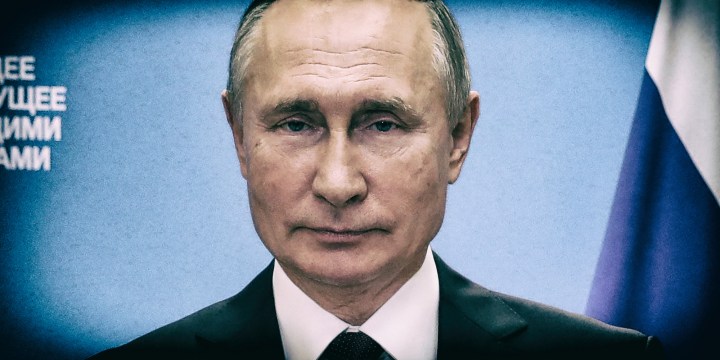
The Ukraine crisis continues to tighten as it seems increasingly likely to end up in open conflict. Historical parallels may help understand the circumstances, but they may also obscure more than they clarify. And the ultimate question, of course, is what happens to the world order if the invasion does happen and Russia can proclaim a victory?
Actual hostilities along the Ukrainian-Russian border from a full-on invasion of Ukraine have not broken out. Not yet, at least. There has, however, been artillery fire from Russia-sponsored separatists in the so-called independent Luhansk and Donetsk regions, including the bombardment of a nursery school, a threatening military aircraft overflight or two, a Russian nuclear missile launch exercise, and an apparent mine explosion or two. But no war yet.
As diplomacy has, so far, failed to unwind the crisis, it may increasingly be heading towards a default belief in the West that, absent a decisive change of heart on the part of Russian President Vladimir Putin about his calculations of the costs/benefits of such an action, actual fighting may be the bitter reality, soon enough.
Diplomatic efforts may yet still continue, but the real texture of the discussion now seems to have become one among Western allies about the appropriate responses to Russian military advances, rather than discussions between Western leaders and Russian President Vladimir Putin, let alone discussions and negotiations between Putin and Ukraine’s president, Volodymyr Zelensky.
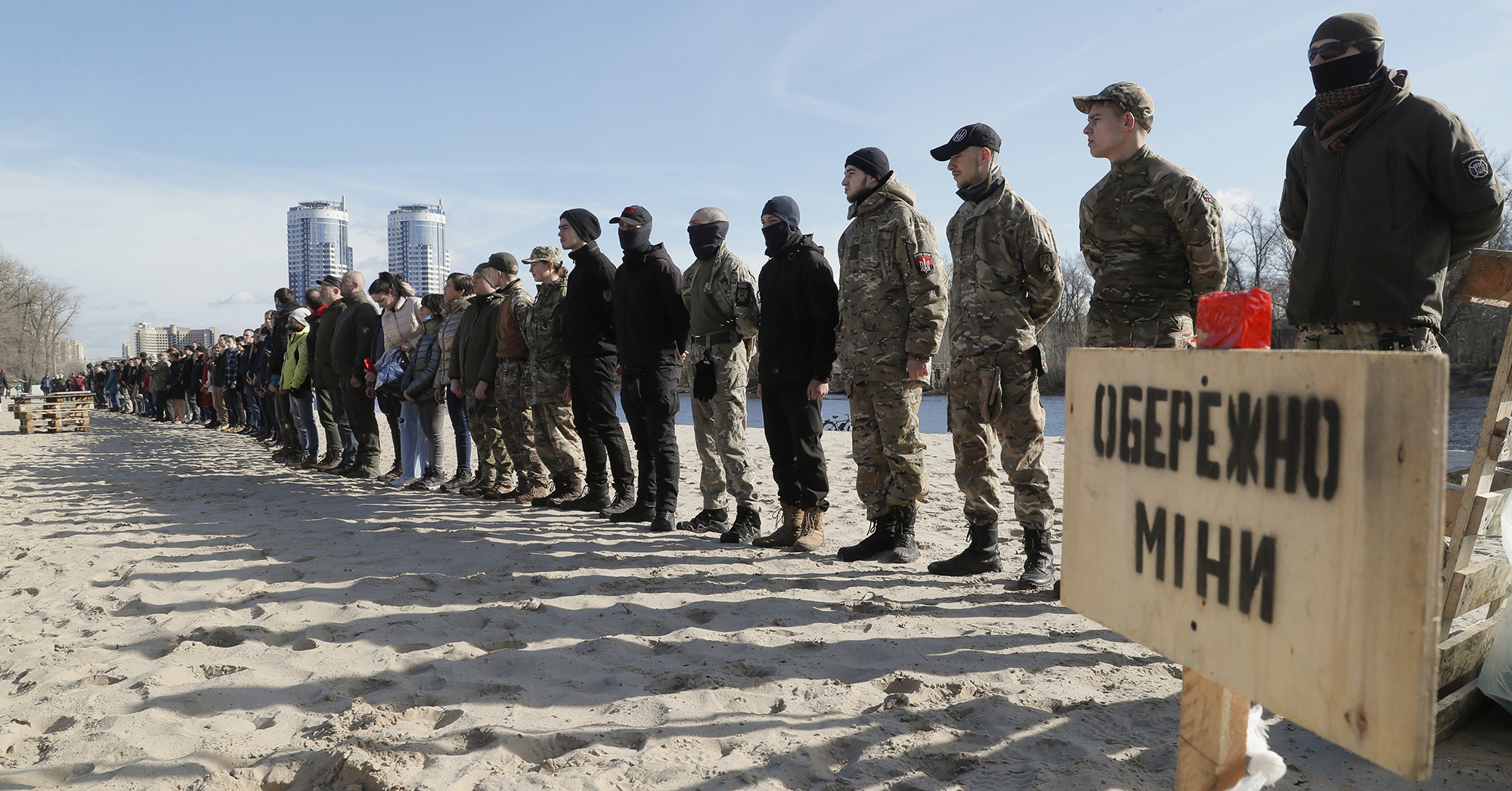
Ukrainians attend an open military training session for civilians organized by Right Sector activists in Kyiv, Ukraine, on 20 February 2022. (Photo: EPA-EFE / Sergey Dolzhenko)
As The Economist had commented earlier on 12 February, “Nothing concentrates minds like 130,000 troops poised to invade. For years, relations between Russia and the West have languished, but the Russian forces converging on Ukraine have caused a spasm of diplomacy. On February 7th and 8th Emmanuel Macron, France’s president, went to Moscow and Kyiv with plans to prevent war. He was to be followed east by the British ministers of foreign affairs and defence. Next week will be the turn of Olaf Scholz, Germany’s chancellor.
“All face two sets of Russian demands. One is to recast Europe’s security architecture by constraining Nato in the east. The other is to lock Ukraine in Russia’s orbit. Of the two, Ukraine is more urgent and perilous. The danger is that in seeking to avoid an invasion, the West lumbers Ukraine with a deal that leads to internal chaos, or even civil strife.
“The fulcrum is Donbas, where Russian-backed separatists have been at war with the rest of Ukraine since 2014…”
Somewhat surprisingly (and perhaps rather courageously under the circumstances), given the imminent threat of an invasion being faced by his country from those Russian troops, President Zelensky showed up at the Munich Security Conference to make his nation’s case to the world, despite the present danger to his nation. (To this writer, it had something of the texture of Ethiopian Emperor Haile Selassie’s appearance at the League of Nations as his country faced an onslaught from the Italian army in 1935.)
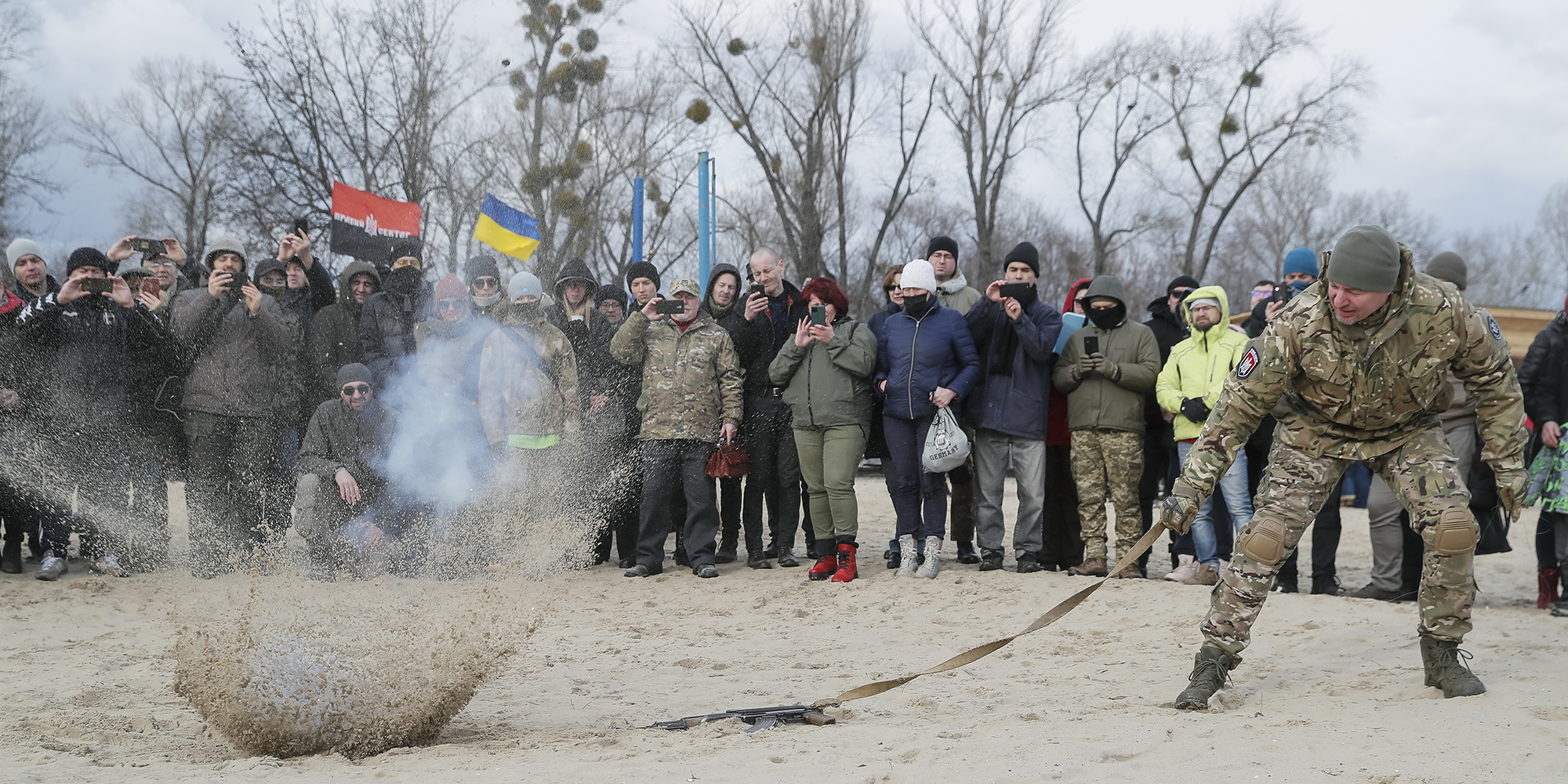
An instructor shows how to operate a booby trap during an open military training session for civilians organized by Right Sector activists in Kyiv, Ukraine, 20 February 2022 (Photo: EPA-EFE / Sergey Dolzhenko)
Zelensky’s pitch was simple: Western nations should not wait until his nation had been devastated by a Russian invasion and the ensuing fighting before imposing the sanctions they have been foreshadowing. In effect, he was accusing the West of serious cart-before-the-horse-ism.
Also at the Munich meeting, despite growing pessimism about a peaceful future outcome, this past weekend, Nato secretary-general Jens Stoltenberg had insisted it was still not too late for Russia to “step back from the brink” and that, simultaneously, Nato as a collective body was still ready to “engage in a substantive dialogue” with Russia to address its security concerns (apropos of The Economist comment). In this way, they could reduce the threat of conflict in Ukraine and find common ground. Also at that meeting, US Vice President Kamala Harris set out a roster of the array of sanctions — economic, financial and personal — that could be placed on Russian leaders and the nation as a whole, if an invasion began.
Unfortunately, encouraging growing pessimism, based on the collected intelligence data by Western nations, there are no real signs of Russian troop withdrawals back from its border with Ukraine, despite earlier claims of such actions by Moscow. As Stoltenberg put it, “On the contrary, Russia’s military build-up continues.”
The latest sense is that the total number of Russian forces in positions that nearly encircle Ukraine (on Russian and its ally Belarus’ territory) now are about 190,000 personnel (estimates vary a bit, depending on what units are included) and their mechanised equipment, including a Russian naval force in the Black Sea, just off the Ukrainian coast.
Historian Heather Cox Richardson, in her daily newsblog, cited political scientist, journalist (and former government senior staffer) David Rothkopf’s tweet referring to the US president’s comments at the end of the week on the crisis, writing, “that Biden is speaking as the leader of the free world. ‘It has been a long time since a US president filled that role. His remarks were concise and pointed… and underscored Western resolve. But the headline: He is convinced [that] Putin has decided… to invade’.
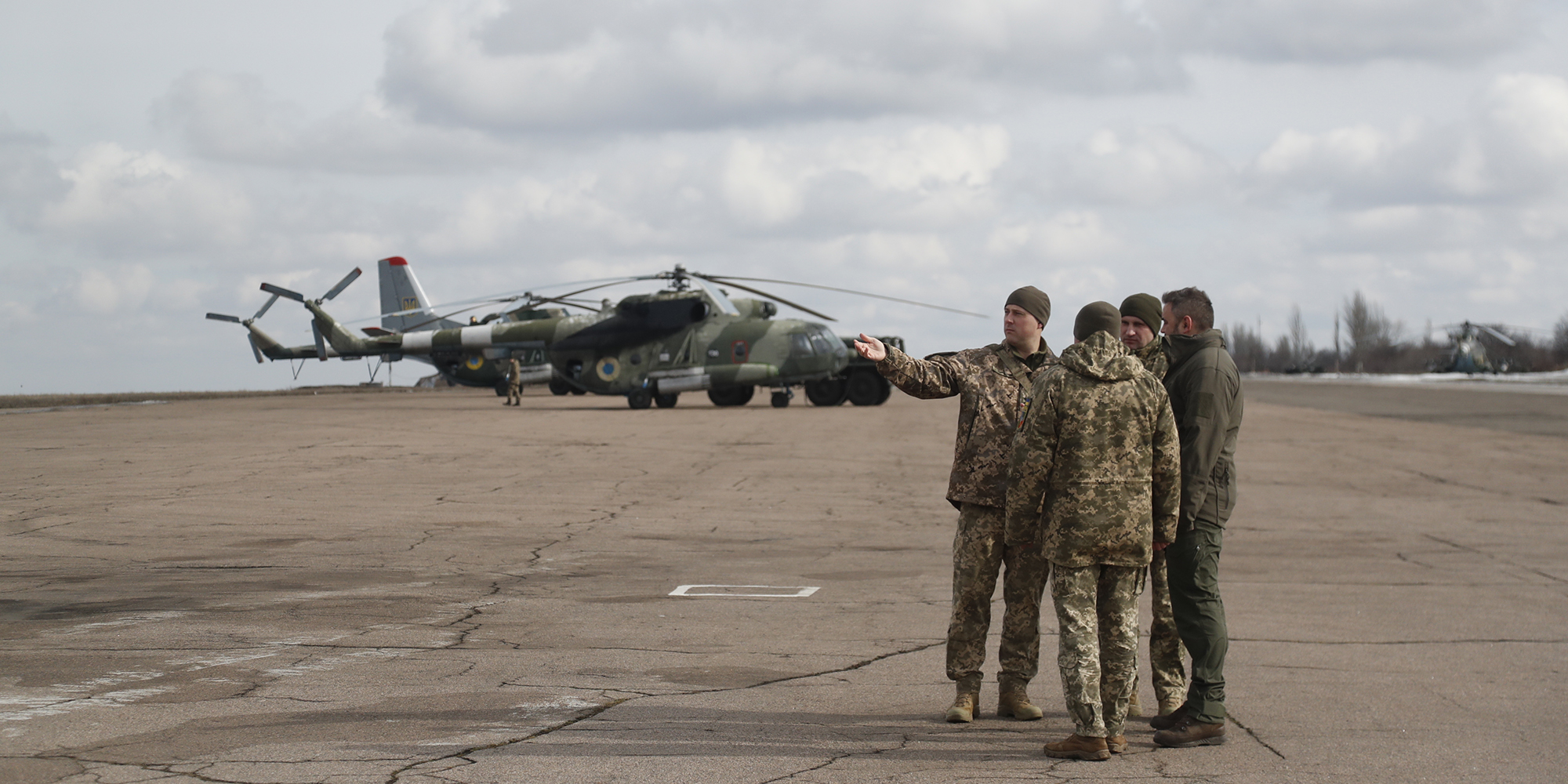
Ukrainian servicemen during a media press tour at an airport near the town of Kramatorsk in the east of Ukraine, 19 February 2022. (Photo: EPA-EFE / Zurab Kurtsikidze)
“Indeed, that was the big takeaway from the speech: Biden said that intelligence sources think Putin has made his decision. Biden said: ‘We have reason to believe the Russian forces are planning to and intend to attack Ukraine in the coming week — in the coming days. We believe that they will target Ukraine’s capital, Kyiv, a city of 2.8 million innocent people.’
“Former director of the US Cybersecurity and Infrastructure Security Agency Chris Krebs pointed out that the advances the United States intelligence community has made in the past few years in counteractive measures have enabled the US to head off plans ‘before they’re set in motion’. US officials are alerting Putin to the fact there are leaks in his team, putting his plans at risk. This can cause strife and perhaps make leaders rethink their policies. As Krebs tweeted, it ‘[p]uts some sand in their gears, creates mistrust, and can slow down planning and operations… The deliberate approach by western gov[ernmen]ts to anticipate Russian disinfo[rmation] & get in front of it is a positive evolution.’ ”
For insights into what Vladimir Putin believes to be his case for effecting a much closer relationship upon Ukraine regardless of any feelings on the matter in Kyiv, readers can check our earlier reporting: Inside Vladimir Putin’s head — what it may mean for Ukraine and everybody else, The President’s nightstand: the real issues, and At the heart of Russia’s foreign policy, fear of the outside world. It should be concerning that reports also indicate Putin is increasingly isolated from any other opinions or advisers, as evidenced by a reluctance to operate outside his bubble and his resistance to travelling beyond his physical location inside the Kremlin and so his own judgment may not be being tested by thoughts from others.
Not surprisingly, in such a climate, commentators, policy and military analysts and historians are now weighing in fast and furious about what the nature of this latest challenge really represents, and whether there are useful historical analogies to help understand the present crisis — and what lessons they might offer. There is, concurrently, something of a growth industry in analyses of the future of Europe, the western alliance, America and Russia’s future circumstances — should an invasion of Ukraine occur.
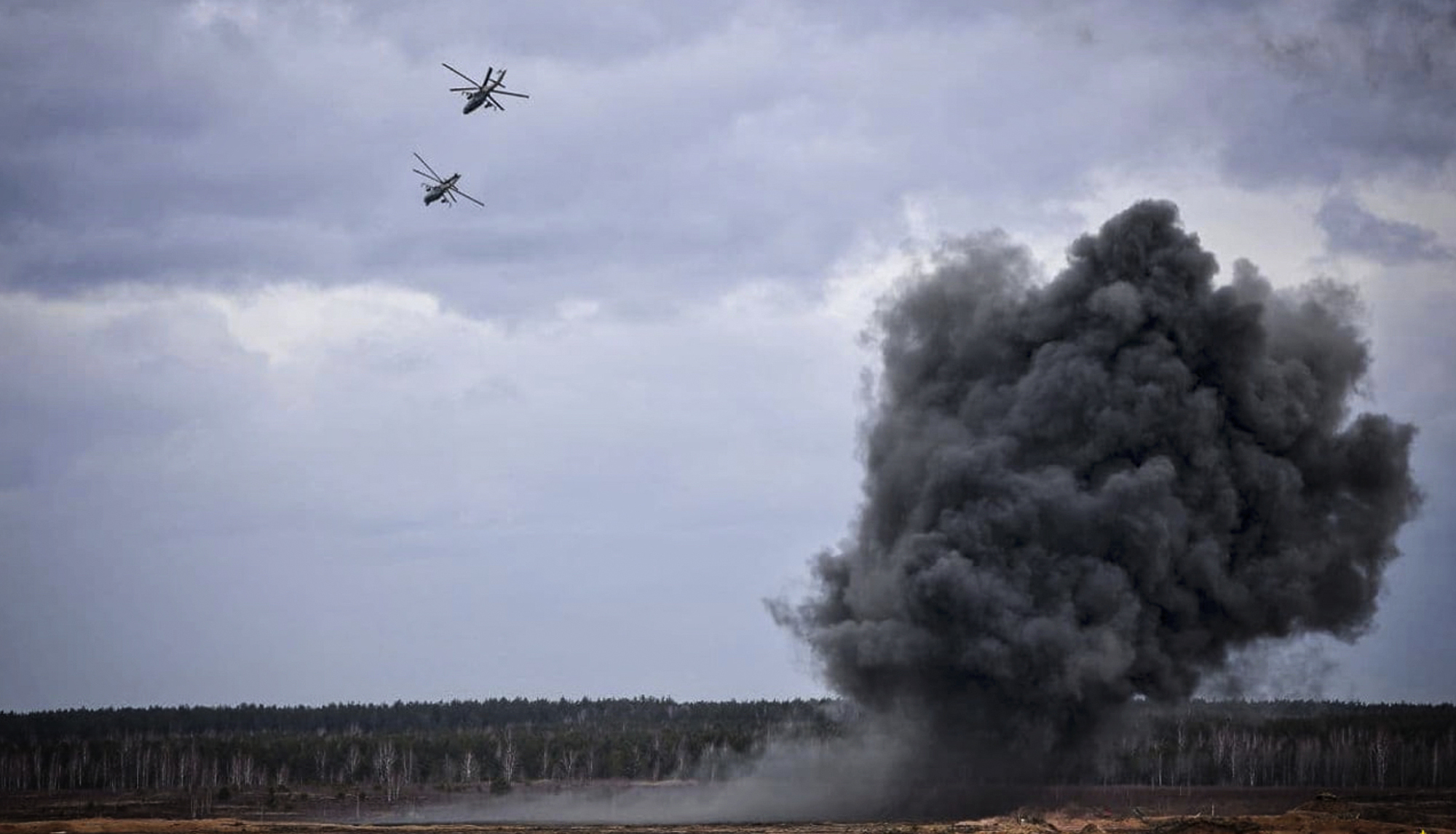
A handout still image taken from a video made available by the Belarusian Defence Ministry press service shows Russian and Belarusian multi-role Mi-35M combat helicopters at a joint operational exercise of the armed forces of Belarus and Russia at a firing range in the Brest region of Belarus, 19 February 2022. (Photo: EPA-EFE / Belarusian Defence Ministry press service / Handout)
As far as the historical analogies go, some are pointing to the month following the assassination of the Austro-Hungarian Empire’s heir to the throne, Archduke Franz Ferdinand, in Sarajevo, in June 1914. Then, the argument goes, the tangle of alliances across Europe almost inevitably resulted in a general war, evolving out of a set of demands by Austria-Hungary on Serbia — whom it accused of supporting the assassination’s plotters.
One study of the period chastised Europe’s collected diplomats as “sleepwalkers” for failing to focus on the growing danger of those demands, the subsequent threats, and the irrevocable alliance commitments that led Europe over a precipice.
Contemporary critics seem to be implying the Nato alliance is in something of the same predicament, even though Ukraine is not a member state, and that any headlong rush to backstop Kyiv is similar to the path trod by the nations on the continent a hundred-plus years ago. The crucial difference is that there are not two competing alliances (then the Entente and the Central Powers) and only one nation is pressing forward with the possibility of hostilities.
With regard to Munich in 1938, a common view is that Vladimir Putin’s actions mimic those of Germany’s Adolph Hitler in the run-up to the Munich conference where British Prime Minister Neville Chamberlain and French Prime Minister Édouard Daladier offered up the Sudetenland portion of Czechoslovakia to Germany in exchange “for peace in our time”, a condition that barely lasted a year before new demands and attacks by Hitler led to World War 2, as Britain and France responded to the German attack on Poland in fulfilment of their defence promise with that nation. Similarities abound, true, but differences are there as well.
In fact, the histories of Ukraine and Sudetenland (the latter was the German-speaking regions of Bohemia and Moravia whose history as a region of German settlement stretched back over hundreds of years under Habsburg rule) are very different. Putin has made it clear it has been his consistent view that the dissolution of the old Soviet Union was an unmitigated tragedy.
Accordingly, it has been his parallel hope since he took power to reverse that process in deference to Ukraine and Russia’s shared history, culture, language, and societies that must be taken into account — with Russia as the senior partner. Accordingly, any effort to permit Ukraine to enter further into the structures of Western Europe must be opposed strenuously.
Simultaneously, from the perspective of Putin, the continent’s security architecture needs a thoroughgoing revision to take into consideration Russia’s goals. By contrast, restrictions on the actual sovereignty of Ukraine’s freedom of action would represent an expanded Russian sphere of influence inflicted by force of arms instead.
Turning to the Cuban Missile Crisis, some have argued there is an equivalence between the two crises in the sense that Russia is responding now about the same way America did when Soviet missile sites were being set up secretly in Cuba by October 1962. That island is, after all, only 160km from the US, and Soviet Intermediate-range ballistic missiles stationed there could reach every major city in the country in less than 15 minutes, save for those in California.
In the judgment of the American government, such missiles represented a secretly established, first-strike force that would thoroughly destabilise the still-evolving nuclear balance. To those who posit a similarity with the current crisis, they note American missile emplacements on the territory of some Eastern European Nato members and the stationing of some American and other military units in some of those newer Nato members, including the Baltic states.
But the differences between the two crises are more significant. The American missiles in Poland are really anti-missile defence weapons, rather than first-strike weapons. Those missiles have not been placed on their sites surreptitiously. And the small US and other forces assigned to the Eastern European Nato members represent symbolic efforts, rather than any real threat to Russian security.

Ukrainians attend an open military training for civilians organized by Right Sector activists in Kiev, Ukraine, 20 February 2022. (Photo: EPA-EFE / Sergey Dolzhenko)
Most importantly, the Cuban crisis occurred before any US-USSR nuclear test or missile placement limitations or treaties (and inspections) had yet been established. In fact, the seriousness of the crisis impelled a successful negotiation of the first US-Soviet limited test ban treaty in 1963.
Historically, the 1962 crisis was resolved through the withdrawal of the Soviet missiles, along with two tacit agreements on the side. The first was that the US would no longer countenance any invasion of Cuba (as with the earlier Bay of Pigs fiasco), and that in succeeding months, increasingly obsolete American missiles stationed in Turkey and southern Italy would also be dismantled. If there are parallels or analogies, they should point towards the understanding of a non-invasion pledge, only this time by Russia towards Ukraine, it would seem.
Accordingly, historians, international relations specialists and political analysts are turning attention to the question of what happens to the global order if Russia carries out a successful (albeit costly) invasion and occupation of Ukraine, let alone what happens to Ukraine itself. Just the other day, the prestigious Foreign Affairs magazine published an article by Liana Fix of the German Marshall Fund and Michael Kimmage from the Catholic University and the German Marshall Fund, titled “What if Russia Wins? — A Kremlin-Controlled Ukraine Would Transform Europe”.
The authors pose the issue in this way: “In the surreal winter of 2021-22, the United States and Europe are once again contemplating a major Russian military intervention, this time in Europe itself. And once again, many analysts are warning of dire consequences for the aggressor. On 11 February, British Minister of State for Europe James Cleverly predicted that a wider war in Ukraine ‘would be a quagmire’ for Russia. In a rational cost-benefit analysis, the thinking goes, the price of a full-scale war in Ukraine would be punishingly high for the Kremlin and would entail significant bloodshed.
“The United States has estimated as many as 50,000 civilian casualties. Along with undermining Putin’s support among the Russian elite, who would suffer personally from the ensuing tensions with Europe, a war could endanger Russia’s economy and alienate the public. At the same time, it could bring Nato troops closer to Russia’s borders, leaving Russia to fight a Ukrainian resistance for years to come. According to this view, Russia would be trapped in a disaster of its own making”.
The two authors add, “Nevertheless, Putin’s cost-benefit analysis seems to favour upending the European status quo. The Russian leadership is taking on more risks, and above the fray of day-to-day politics, Putin is on a historic mission to solidify Russia’s leverage in Ukraine [as he has recently in Belarus and Kazakhstan]. And as Moscow sees it, a victory in Ukraine might well be within reach. Of course, Russia might simply prolong the current crisis without invading or find some palatable way to disengage. But if the Kremlin’s calculus is right, as in the end it was in Syria, then the United States and Europe should also be prepared for an eventuality other than a quagmire. What if Russia wins in Ukraine?”
The authors’ answer to their question is that, “If Russia gains control of Ukraine or manages to destabilise it on a major scale, a new era for the United States and for Europe will begin. US and European leaders would face the dual challenge of rethinking European security and of not being drawn into a larger war with Russia. All sides would have to consider the potential of nuclear-armed adversaries in direct confrontation. These two responsibilities — robustly defending European peace and prudently avoiding military escalation with Russia — will not necessarily be compatible. The United States and its allies could find themselves deeply unprepared for the task of having to create a new European security order as a result of Russia’s military actions in Ukraine.
“For Russia, victory in Ukraine could take various forms. As in Syria, victory does not have to result in a sustainable settlement. It could involve the installation of a compliant government in Kyiv or the partition of the country. Alternatively, the defeat of the Ukrainian military and the negotiation of a Ukrainian surrender could effectively transform Ukraine into a failed state. Russia could also employ devastating cyberattacks and disinformation tools, backed by the threat of force, to cripple the country and induce regime change. With any of these outcomes, Ukraine will have been effectively detached from the West.”
Of course, such an outcome is not inevitable, just as a death in Sarajevo did not inevitably have to lead to World War 1; that the Munich meeting did not necessarily need to surrender a major chunk of Czechoslovakia to Nazi Germany; or that the Cuban Missile Crisis would have inevitably led to nuclear exchanges between the US and the Soviet Union. In the latter case, it did not. But this time, it will take much more than just good thoughts and wishful thinking to avert a crisis from sliding into open conflict — a conflict whose endpoints no one can reasonably delineate right now. DM


















 Become an Insider
Become an Insider
Comments - Please login in order to comment.